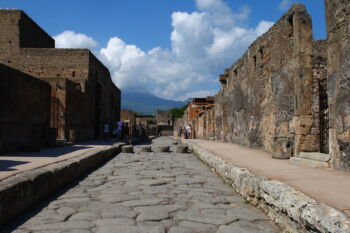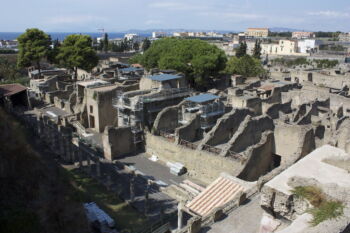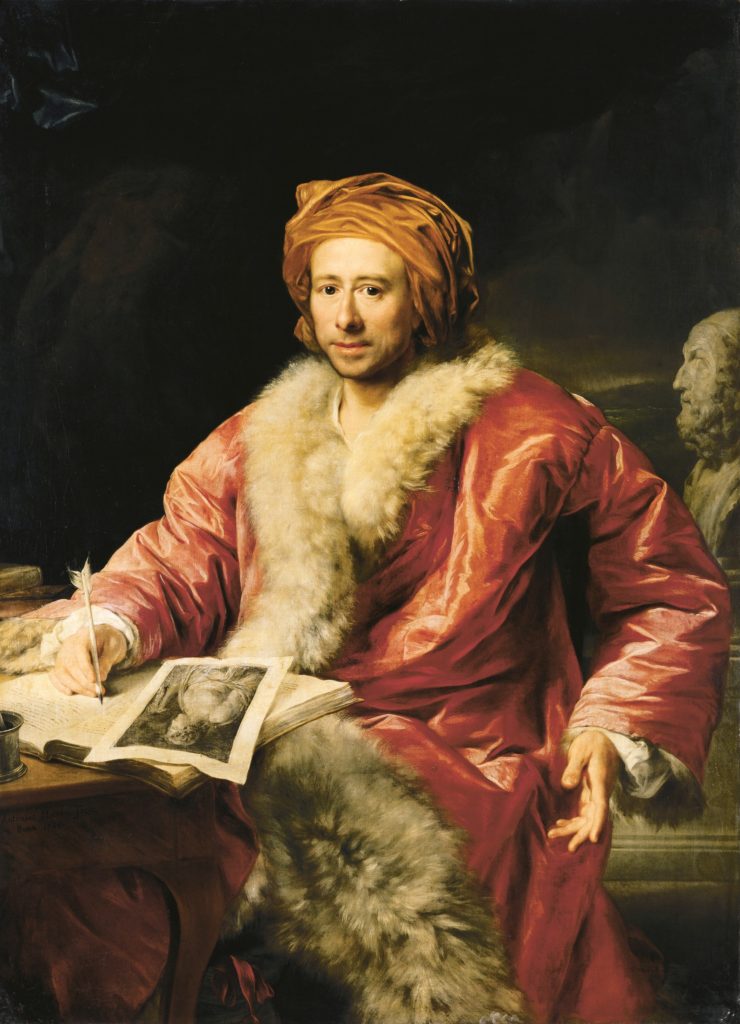During the 18th Century, Charles VII established his dominion in the South of Italy and decided to invest in
archeology and in the study of the ancient classical world. The discovery of the Roman ruins of Pompeii and Ercolano will influence art, culture, and architecture for centuries to come.

Image source: https://search.creativecommons.org/photos/ba711807-4b6b-4a43-ad75-7f0b3600c120 Author:by Averain
The Discovery of the Buried Cities
Herculaneum was unearthed in 1738 when king Charles VII ordered the building of his summer palace. Major excavations took place in 1748, when Alcubierre, a Spanish military engineer commissioned by the king, started to explore an area known as “La Cività”. Excavations in the area of the Amphitheatre were not encouraging. In 1755, excavations brought to light the house of Julia Felix, the first building completely explored. Excavations in this period, because of the carelessness, caused the destruction of relics not deemed worthy enough for Charles VII’s museum at Portici until the arrival of Karl Weber in Herculaneum, another interesting city to explore. Many people became aware of this happening in that part of Italy and, in the attempt to control what he saw as his, Charles VII denied the possibility to export antiquities in 1755. Visitors needed an invitation to see the discoveries. In the 1760s and 1770s, the interest in the preservation of Pompeii grew up a lot.

Image source: https://search.creativecommons.org/photos/d0c36f9e-b053-4527-a9b0-d3015d0eb812 Author:by Nick Bramhall
The Villa of the Papyri
The Villa was discovered by Karl Weber in 1750 and was an ancient estate for rich individuals. Villa of the Papyri was frozen for centuries and Weber drew a sketch of what the Villa would have looked like, using his knowledge and experience. His drawing featured the areas seen by him and his team, a bath, and several rooms. The villa’s front stretched for more than 250 meters, and it is faithful to the classical scheme of a Roman home. The atrium was used as an entrance hall and was a link to many parts of the house.

Image source: https://en.wikipedia.org/wiki/Villa_of_the_Papyri#/media/File:Herculaneum,_past,_present_and_future_(1908)_(14596218878).jpg
The first peristyle has 10 columns on each side and a swimming pool in the middle. A second peristyle could be reached through a “tablinum” (a room situated on one side of the atrium and opposite to the entrance). The living rooms went around the porticoes and terraces, giving to the owner’s sunlight and a view of the sea. Many statues were still intact; statues of the epic writer Homer, or Pan and Hermes. Probably, one of the most important discoveries at the estate were books and scrolls. Many questions arose around the inhabitants of Herculaneum, the answers will come many years later.
The Ancient Cult of Apollo
This cult was of Greek origin and spread in Italy through colonies. The cult can be traced back to the 6th century B.C., inscripted on Etruscan bowls found during the excavations. Located in the forum, it is the most important religious building and has a very ancient origin. The temple was surrounded by columns with Ionic capitals, later replaced by Corinthian capitals. The Doric architrave of metopes and triglyphs was transformed into a continuous frieze with griffins, festoons, and foliage. Some statues are now exposed in the National Archeological Museum of Naples. The temple had 48 Ionic columns and was on a high podium, the entrance was a fusion of Greek and Italic ideas. Unusually, the cella is sited further back. It is still possible to see a white marble altar on a travertine base, with an inscription with the names of the quattuorviri (four officials of the Roman Empire) who dedicated it.

Image source: https://search.creativecommons.org/photos/3b851b86-12d3-44b7-b15e-499b459709a2 Author:by Amphipolis
Neoclassicism and Enlightenment, Johann Joachim Winckelmann
Neoclassicism is a revival of classic antiquity inspired from the classical period, during Enlightenment, “the period of rationality“. The revival can be traced back to the birth of formal archaeology with Johann Joachim Winckelmann. The writings of this author were important in giving guidelines to this movement and distinguished between Ancient Greek and Roman art. Winckelmann believed that art should aim at “noble simplicity and calm grandeur”. The Grand Tour brought a Neoclassical revival throughout Europe. Neoclassicism was strong in architecture, sculpture, and the decorative arts. Winckelmann played a key role in the dissemination of knowledge of the discoveries at Pompeii and Herculaneum.

Image source: https://en.wikipedia.org/wiki/Johann_Joachim_Winckelmann#/media/File:Johann_Joachim_Winckelmann_(Anton_von_Maron_1768).jpg
An Engraver’s View of Classic World
Giovan Battista Piranesi was born in Venice. He was famous for his etchings of Rome (“Views of Rome“) and of fictitious and atmospheric “prisons” (“Le Carceri d’Invenzione“). His first work was “Prima Parte di Architettura e Prospettive” (1743), followed by “Varie Vedute di Roma Antica e Moderna“. Under Clement XIII he restored the choir of San Giovanni in Laterano and Santa Maria del Priorato. Venice and Rome revived through the Grand Tour. He underlined the poetic aspects of the ruins and humans appeared to echo the decay of the ruins. The late Baroque works influenced Piranesi’s art that will play a key role in Neoclassicism. Piranesi was prompted by the relics found at Herculaneum and Pompeii. He wanted to see these discoveries in a new light, giving his emotions an important place in his engravings. Piranesi was interested in the Graeco-Roman debate, with Winckelmann who thought Greek culture was superior to the Roman, he thought it was vice-versa.

Image source: https://en.wikipedia.org/wiki/Pietro_Labruzzi#/media/File:Pietro_Labruzzi_portrait_of_Giovanni_Battista_Piranesi.jpg
The Influence on 18th Century Art
Artists and writers were greatly inspired by the objects in the ruins of Pompeii and Herculaneum. They strive to gain more knowledge on Pompeii grew after the beginning of the excavations. The eruption of Vesuvius became a recurring theme in paintings all over Europe. In France and England, the neo-classical style embraced by artists such as Joseph Wright of Derby and Pierre-Jacques Volaire showed contemporary renditions of the classical world. The discovery of Pompeii and Herculaneum made these towns legendary with the same force that destroyed them.

Info source:
https://en.wikipedia.org/wiki/Pompeii
https://en.wikipedia.org/wiki/Herculaneum
http://omeka.wellesley.edu/piranesi-rome/exhibits/show/discovery-of-pompeii-and-hercu/intro-pompeii-herculaneum
https://www.planetpompeii.com/en/map/the-temple-of-apollo.html
https://en.wikipedia.org/wiki/Johann_Joachim_Winckelmann
https://en.wikipedia.org/wiki/Giovanni_Battista_Piranesi
